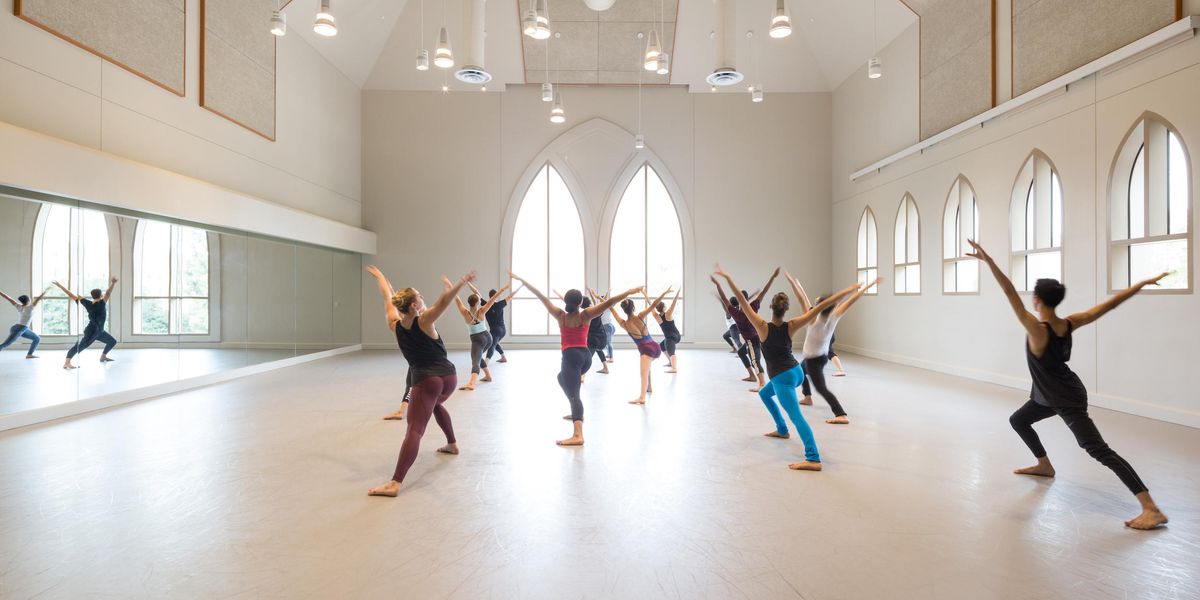Doug Varone and Dancers
Joyce Theater
New York, NY
October 9–14, 2012
Performances reviewed: Oct. 9 & 14
Doug Varone is willing, even eager—and certainly more than able—to take on imposing musical scores. Perhaps it’s because of his frequent work in the opera world (his choreography for the Metropolitan Opera’s Les Troyens will be seen in December), but he confronts music of stature and emotional power with insight and rigor, often with intriguing and deeply involving results. Varone’s 25th-anniversary season at the Joyce offered two programs that included new works and major reconstructions. Whether the score is by Schubert or John Adams, he creates a persuasive stage world, embodying the music with imagination and individuality.
His works have an admirable shapeliness and solidity; as the six pieces unfolded, one could admire his ability to pour dancers onto the stage, so that their bodies at times seemed to expand into a vaster cosmos. Eloquently detailed work by his design collaborators—notably the deceptively casual, always apt costumes of Liz Prince—added resonance and texture to each dance.
In Carrugi, the season’s major premiere, Varone meets the surging choruses and tempestuous arias of Mozart’s youthful oratorio Betulia Liberata with confidence. Fluidly evolving formations often create the sense of a population larger than the eight dancers onstage; in the more intimate moments, bodies investigate each other unsentimentally. A rough-and-tumble duet for Hollis Bartlett and Alex Springer manages to imply competition and combat while emanating a quiet playfulness. Julia Burrer’s striking reach and loping grace are showcased in a section in which she remains separate from—even defensive against—the other three women, concluding with her outstretched arm forming a barrier against them. Carrugi fascinates through its architectural sweep but, on first viewing, remains more opaque dramatically.
In Able to Leap Tall Buildings, a new duet, there is no identifiable Superman, but rather a couple—Erin Owen and Springer—locked in a central square of light, reacting with abrupt, at times jerky rigidity to the eerie horror-movie strings and harsh electronic sounds of Julia Wolfe’s Cruel Sister. Each reacts robotically to the touch of the other in a confrontation that is both whimsical and disturbing. (This is one segment of Varone’s upcoming premiere to the full Wolfe score, which will have its premiere in February at the 92nd Street Y’s Harkness Dance Festival.)
Photos: Erin Owen and Alex Springer in
Able to Leap Tall Buildings.
By Bill Hebert, Courtesy Doug Varone and Dancers.
Boats Leaving
, one of the works restaged for this anniversary, confirmed the stunning impact it made at its 2006 premiere. Arvo Pärt’s austere, fervent, haunting Te Deum—which often sounds like modern-day Gregorian chant—is a score that could overwhelm and easily invite cliché., especially as heard through the Joyce’s throbbing sound system. But Varone has matched it with a work of restrained eloquence, in which bodies cluster together into configurations that effortlessly dissolve and re-form. All the while, he conveys an understated sense of the impending tragedy that these people are either fleeing or about to confront.
All eight dancers, wearing Prince’s soft blues and grays, are onstage throughout. They form pulsating organisms one moment, glide into a tableau of poignant urgency the next; the moments of suspension and pause, as well as the ongoing inevitability of the work’s flow, counteract the music’s passionate melancholy. One by one—purposeful, perhaps doomed—they gradually slip offstage.
Ballet Mécanique
, Varone’s 2001 interpretation of George Antheil’s wildly rhythmic 1925 score for pianos, percussion, and the occasional siren, could not be more different. The blue of the dancers’ jumpsuit costumes (also by Prince) is now electric. In keeping with Antheil’s raucous, propulsive evocation of machinery, the dancers cut through space with efficiency, more like programmed pawns than actualized individuals.
Antheil’s score—with its constant echoes of Le Sacre du Printemps and suggestions of Satie’s Parade with its sirens and whistles—was originally intended for a dadaist film, and Varone adds a cinematic element: The stage picture is layered with Wendall K. Harrington’s ongoing projections—at first on a downstage scrim, later on a backdrop, and even over the dancers’ bodies. A frenzy of geometric patterns and vortexes is superimposed on the vigorous action. Varone presents the dancers in smaller, overlapping groupings here. They occupy individualized areas, as the space is sharply divided by David Ferri’s lighting.
Urged on—possibly pursued—by the score’s repetitive pounding, the dancers become not quite automatons as they forge through their paces with obedient exactness. The 30-minute work, with Harrington’s visuals turning increasingly expansive and free-form, is exhilarating as well as ominous.




